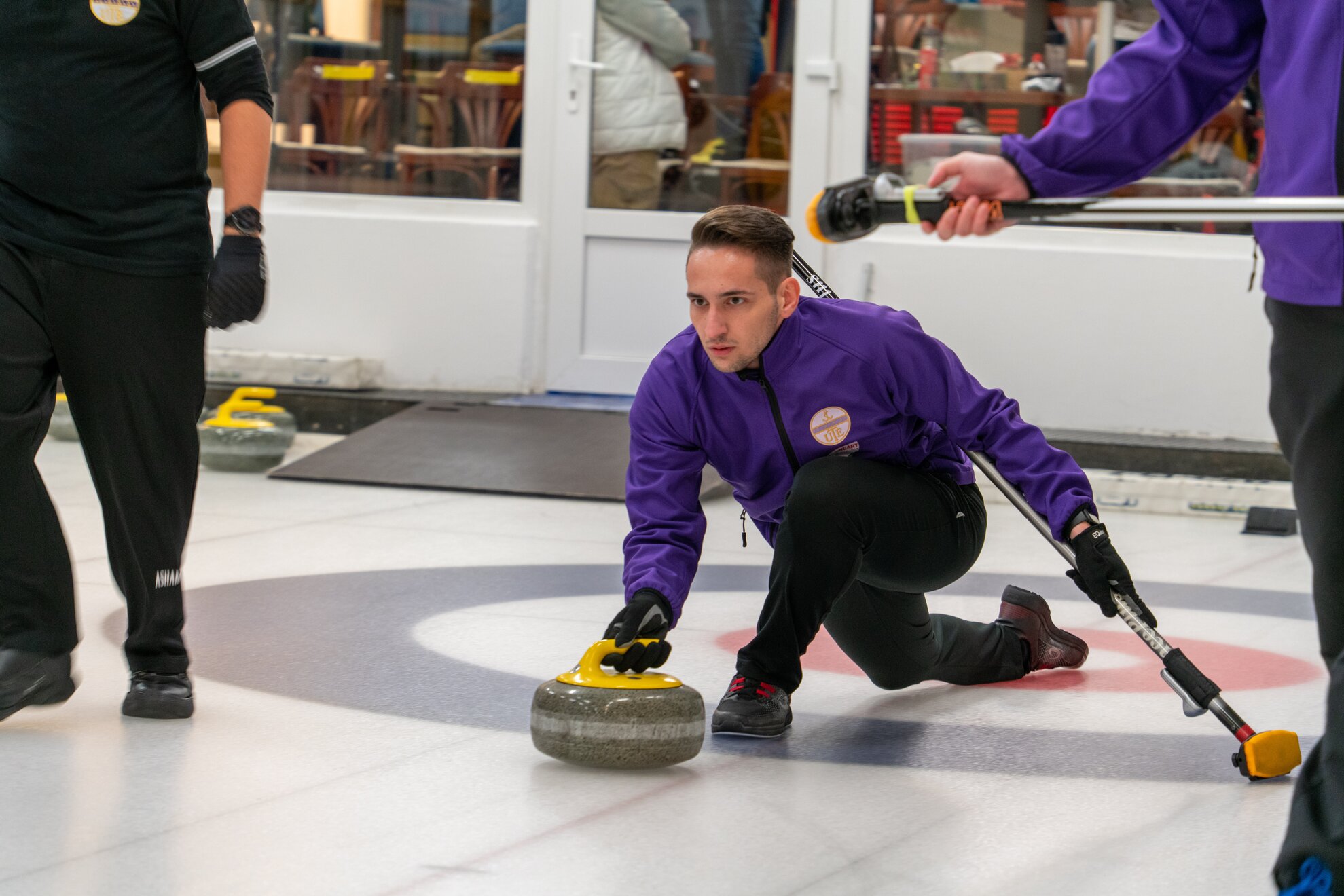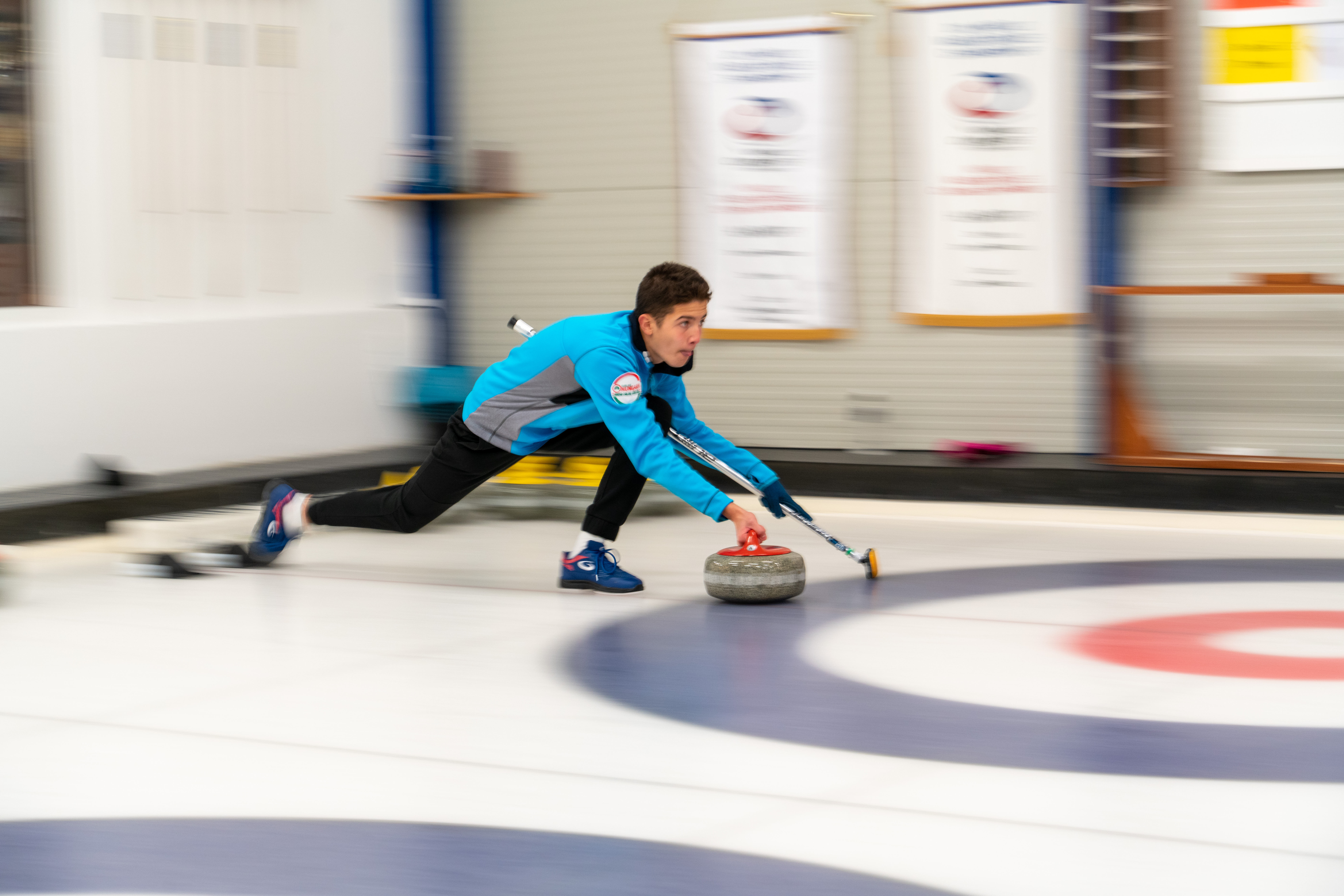While Britain, Canada and the Scandinavian nations often pick up Olympic medals in curling, Hungary has never seemed to take an interest – until now.

The venerable Scottish sport has only been played in Hungary for the last 20 years. The game involves teams of four competing against one other, each with eight stones they need to push to the middle of the target, concentric circles drawn somewhat like a dartboard on ice. Co-ordination and precise teamwork are paramount. As late starters, Hungary are currently mid-ranking in Europe – but curling is gaining ground here.
The Hungarian Curling Federation is organising its next open day on 11 February. Details are given at the end of this article.

According to HCF sporting director Bálint Kiss, to play at professional level requires a lot of practice, but the basics can be mastered in just a few hours, moving around the ice with friends and colleagues. Here he explains the attraction:
We Love Budapest: How did you first hear about curling?
Bálint Kiss: I graduated in sports management from the ELTE Institute of Health Promotion & Sport Sciences. During the course, we had to participate in three semesters of compulsory training. In the first two, I worked with the Hungarian Curling Federation – that was the first time I saw it. After university, I became an umpire. My first competition was in 2015, then I completed an international course for judges in Germany.

WLB: Who first introduced curling to Hungary and when?
BK: The Hungarian Curling Federation was found in 1989, but in the ’90s, it
was only a hobby, with a few clubs such as the one in Székesfehérvár. The first
Hungarian National Championship was held in 2003.
For the first two years, it was
held in Kitzbühel, Austria, because there was no dedicated rink here. In 2005, a
Hungarian entrepreneur built a modern one on the outskirts of Budapest in
Kamaraerdő, which is still privately owned.

WLB: How has the sport developed since?
BK: Curling is still developing internationally ,with more and more
countries joining the World Curling
Federation in recent years. Mixed doubles and mixed teams have also
been introduced alongside the traditional men’s and women’s ones.
Here in
Hungary, curling is really Budapest-based, but the federation’s aim is to establish
rural centres across the country. Currently, there are curling teams in Makó,
Sátoraljaújhegy and Tatabánya. We would like to support them as much as we can,
as well as other cities who might be interested. Right now, we have about 200
registered players. Our goal is to increase that number and oversee 22 member
clubs.

As you can see, Hungarian curling is still in its infancy, but despite this, we have two-time Mixed Doubles World Champions in Dorottya Palancsa and Zsolt Kiss, and silver medallists in Ildikó Szekeres and György Nagy. In addition, Laura Nagy won a gold medal at the 2020 Youth Winter Olympic Games, also in Mixed Doubles. We are among the best in the world in this category.
WLB: How is the sport organised here?
BK: The Hungarian Federation organises competitions in several categories, teams, seniors, mixed doubles, and so on, as well as also youth championships. Foreign teams compete in the B League, won this year by Croatia. Curling is also a very inclusive sport, we have deaf and wheelchair teams in almost every competition.

The clubs involved are some of the oldest and biggest in Hungary such as Ferencváros, Vasas and Újpest. Right now, our biggest problem is that we have only one dedicated curling rink in the whole country. If we want to increase the number of players, we have to solve this problem. We have a long-term plan, but it is a slow process until we can get a new rink.

WLB: How do you see the sport progressing here in the future – is it easy to attract new players and spectator interest?
BK: The key to make a step forward, first of all, to have a new and bigger curling rink. Our training opportunities will be limited until then. To promote the sport, the federation has open days, festivals and other events. The Kamaraerdei Curling Club welcomes spectators as well as players, and you can also stream matches online through the SoftPeelR website.
Further information
Hungarian Curling Federation
1112 Budapest, Susulyka utca
Open Days: 11 February, 4 & 18 March




